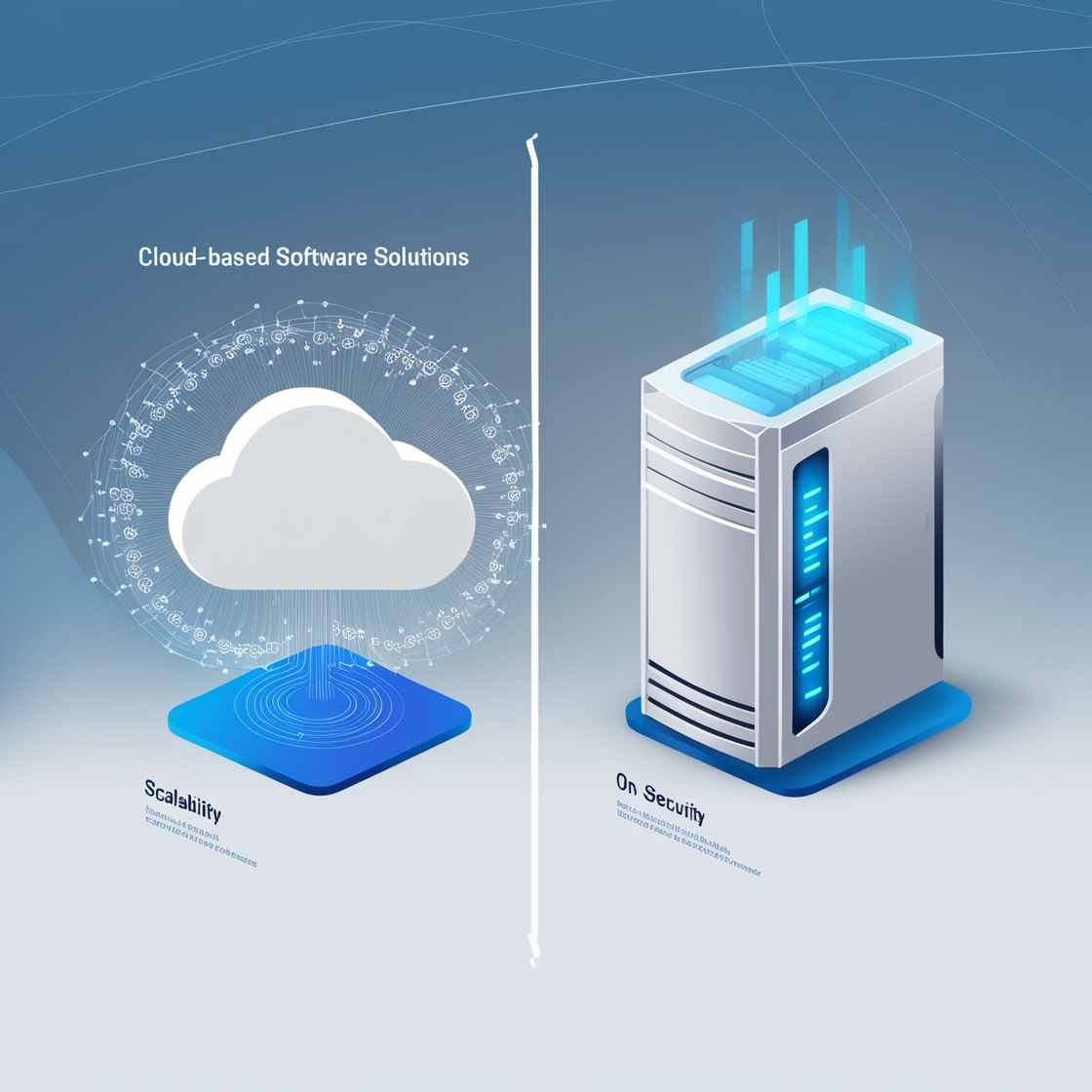Introduction
When it comes to software solutions, the debate between cloud-based and on-premise software is as old as the technologies themselves. Both have their merits, but how do you know which one is right for your business? Let’s dive into the nitty-gritty of both solutions, so you can make an informed decision.
Key Differences
Deployment
Cloud-based software is hosted on the vendor’s servers and accessed via the internet. On the other hand, on-premise software is installed locally on your company’s hardware. This fundamental difference impacts everything from accessibility to control.
Cost Structure
Cloud solutions often operate on a subscription model, which means you pay monthly or annually. In contrast, on-premise software typically requires a hefty upfront investment in licenses, hardware, and ongoing maintenance.
Maintenance
With cloud software, the vendor takes care of all maintenance, updates, and troubleshooting. However, for on-premise solutions, your IT team shoulders that responsibility, which can be both a burden and a benefit, depending on your resources.
Benefits of Cloud-Based Software
Accessibility
Imagine being able to access your software from anywhere with an internet connection. Cloud solutions make this possible, enabling remote work and flexibility.
Scalability
As your business grows, so can your software needs. Cloud solutions allow you to easily scale up or down based on your current requirements without major disruptions.
Automatic Updates
Say goodbye to manual updates! With cloud-based software, you’ll always have the latest features and security patches without lifting a finger.
Challenges of Cloud-Based Software
Internet Dependency
While being connected is a perk, it can also be a drawback. If your internet goes down, so does your access to crucial software.
Data Security Concerns
Storing sensitive data on the cloud can raise eyebrows, particularly regarding compliance and security. It’s essential to choose a reputable provider with robust security measures in place.
Benefits of On-Premise Software
Control over Data
With on-premise solutions, your data is physically stored on your servers. This can be a major advantage for companies with strict compliance regulations.
Customization Options
On-premise software often allows for deeper customization. If you have unique business needs, this can be a significant factor in your decision.
Performance
For companies that require high-performance software, particularly those with large databases, on-premise solutions can offer superior speed and reliability.
Challenges of On-Premise Software
High Initial Costs
The upfront costs for on-premise software can be daunting. Licenses, hardware, and setup fees can add up quickly.
Maintenance Responsibility
Your IT team will need to handle all updates and troubleshooting. This can drain resources, especially for smaller companies without dedicated IT staff.
Use Cases for Cloud-Based Solutions
Startups
Startups often thrive in the cloud due to lower costs, minimal setup time, and flexibility. It allows them to scale as needed without significant financial risk.
Remote Teams
For companies with employees working from various locations, cloud-based software provides seamless collaboration and access.
Use Cases for On-Premise Solutions
Large Enterprises
Larger organizations may prefer on-premise solutions for better control over their data and to meet specific compliance requirements.
Industries with Strict Compliance
Fields like finance and healthcare often require on-premise solutions to adhere to stringent data protection regulations.
Comparative Analysis
When evaluating performance metrics and user experience, it often boils down to individual business needs. Some may find cloud solutions to be more user-friendly, while others may appreciate the reliability of on-premise software.
Future Trends in Software Solutions
Hybrid Models
As businesses evolve, hybrid solutions that combine the benefits of both cloud and on-premise software are becoming increasingly popular.
Advancements in Cloud Security
With growing concerns over data security, advancements in cloud security technologies are making cloud solutions more appealing to risk-averse businesses.
Conclusion
Choosing between cloud-based and on-premise software is not a one-size-fits-all scenario. Each option has its own set of benefits and challenges. By carefully considering your business needs, budget, and future goals, you can select the solution that aligns best with your operational strategy.
FAQs
What is the main advantage of cloud-based software?
The primary advantage is accessibility from anywhere, allowing for greater flexibility and remote work capabilities.
Is on-premise software more secure than cloud?
Not necessarily. On-premise software gives you control over data, but cloud providers often have advanced security measures in place.
Can businesses switch from on-premise to cloud?
Yes, many businesses successfully transition to cloud solutions, though it requires careful planning and execution.
What type of businesses benefit most from cloud solutions?
Startups, remote teams, and businesses looking for scalability often benefit greatly from cloud solutions.
Are there any hidden costs with cloud software?
While subscription models can be straightforward, it’s essential to review all potential fees, including data storage and overages.
